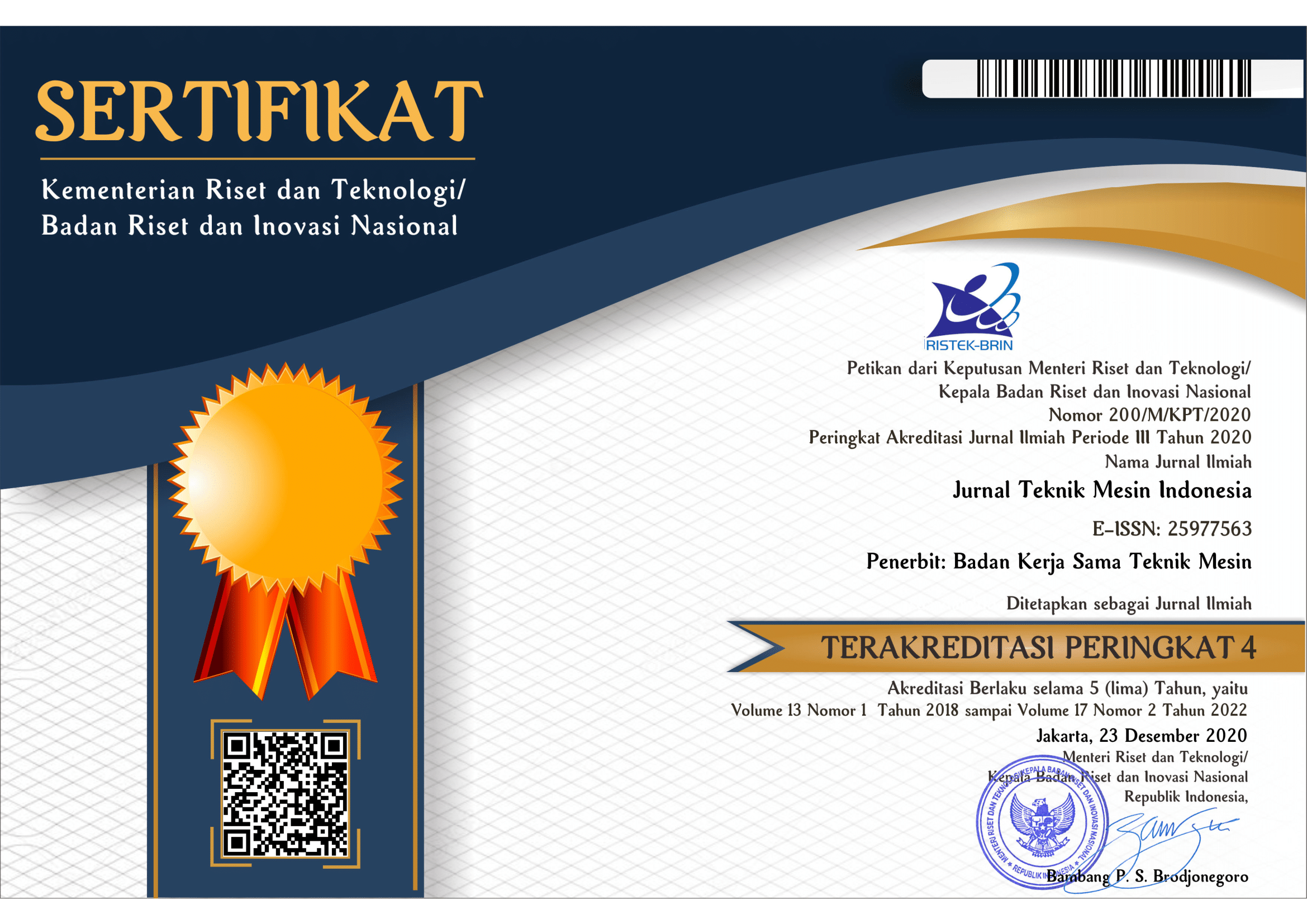Analisis deformasi pada coupling element dari automatic mechanical coupler: studi kasus LRT Palembang
DOI:
https://doi.org/10.36289/jtmi.v14i2.132Keywords:
automatic mechanical coupler, LRT, finite element method, von Misses stress.Abstract
Coupler is a mechanical component that used to connect one carbody to another. The resistance to exceptional load and the endurance to normal load become the important parameter of safety in the operation. This study aims to conduct deformation analysis numerically on coupling element of automatic mechanical coupler, which is utilized for light rail transit (LRT), based on actual operational loads. The component of coupling element observed is coupling link and hooked plate. An 3D solid model is developed without any geometric simplification in order to acquire actual phenomenon. Material used in this study is stainless steel that having isotropic behavior and following ASTM standard of A633 Grade E. Three type of simulations are applied, i.e. static and transient simulation, to obtain static and dynamic safety factor of coupling element, and fatigue simulation based on three transient loading modes, to obtain the life cycle of coupling element. The simulation results reveal that the observed coupling element is safe from subjected exceptional and normal service loads. Moreover, the simulation indicates that the critical component based on maximum von Mises stress and life cycle is coupling link and hooked plate, respectively.










